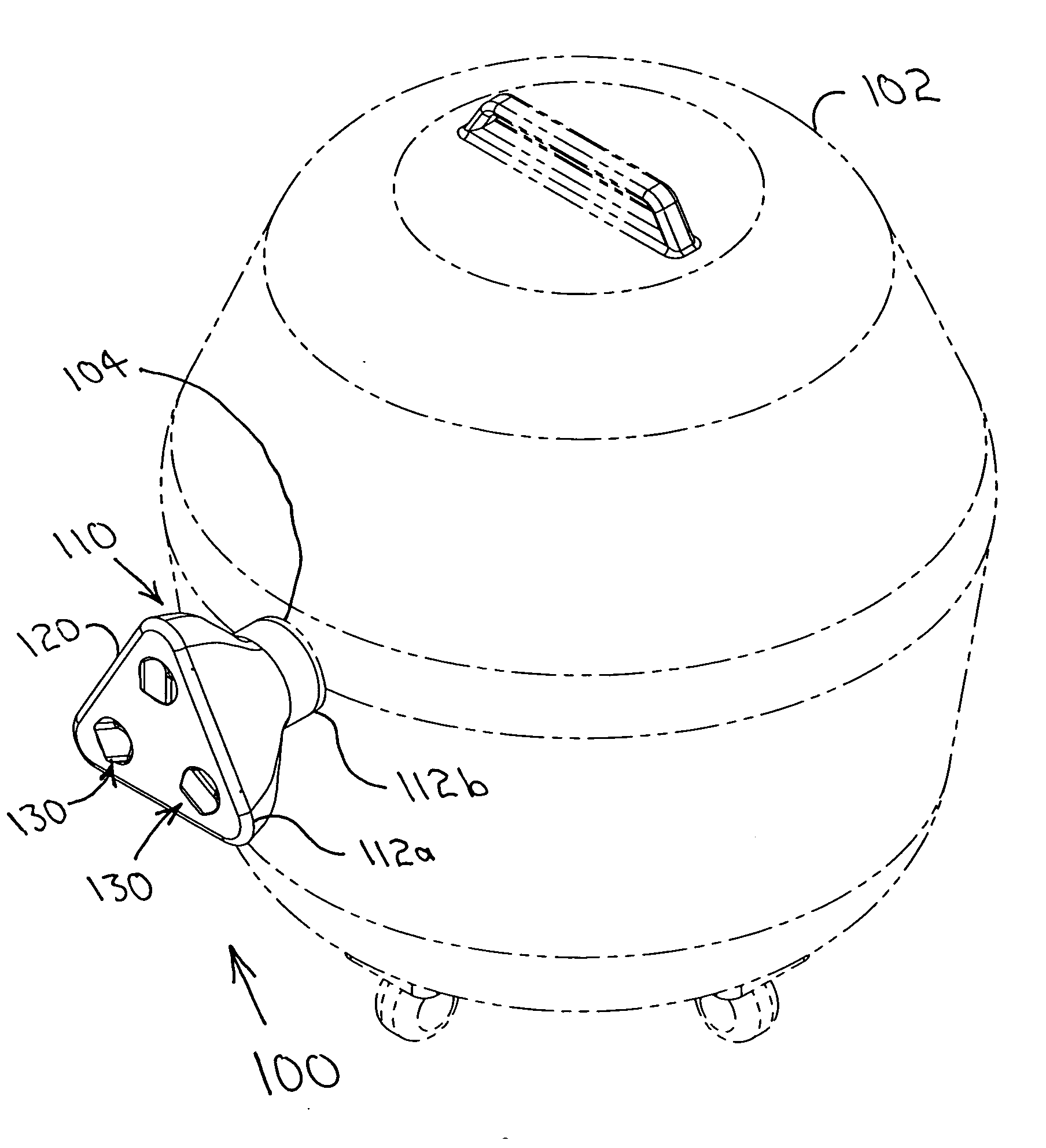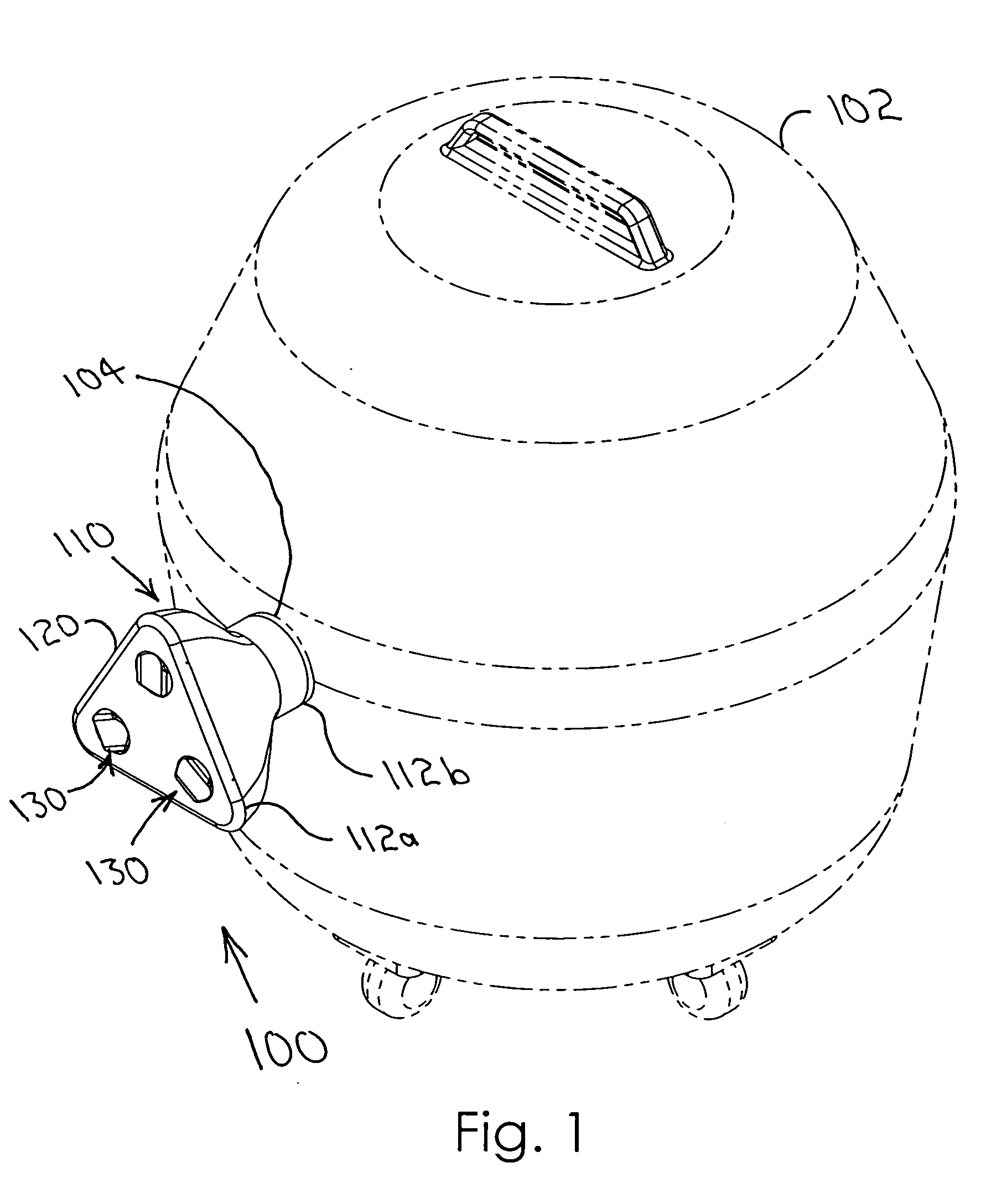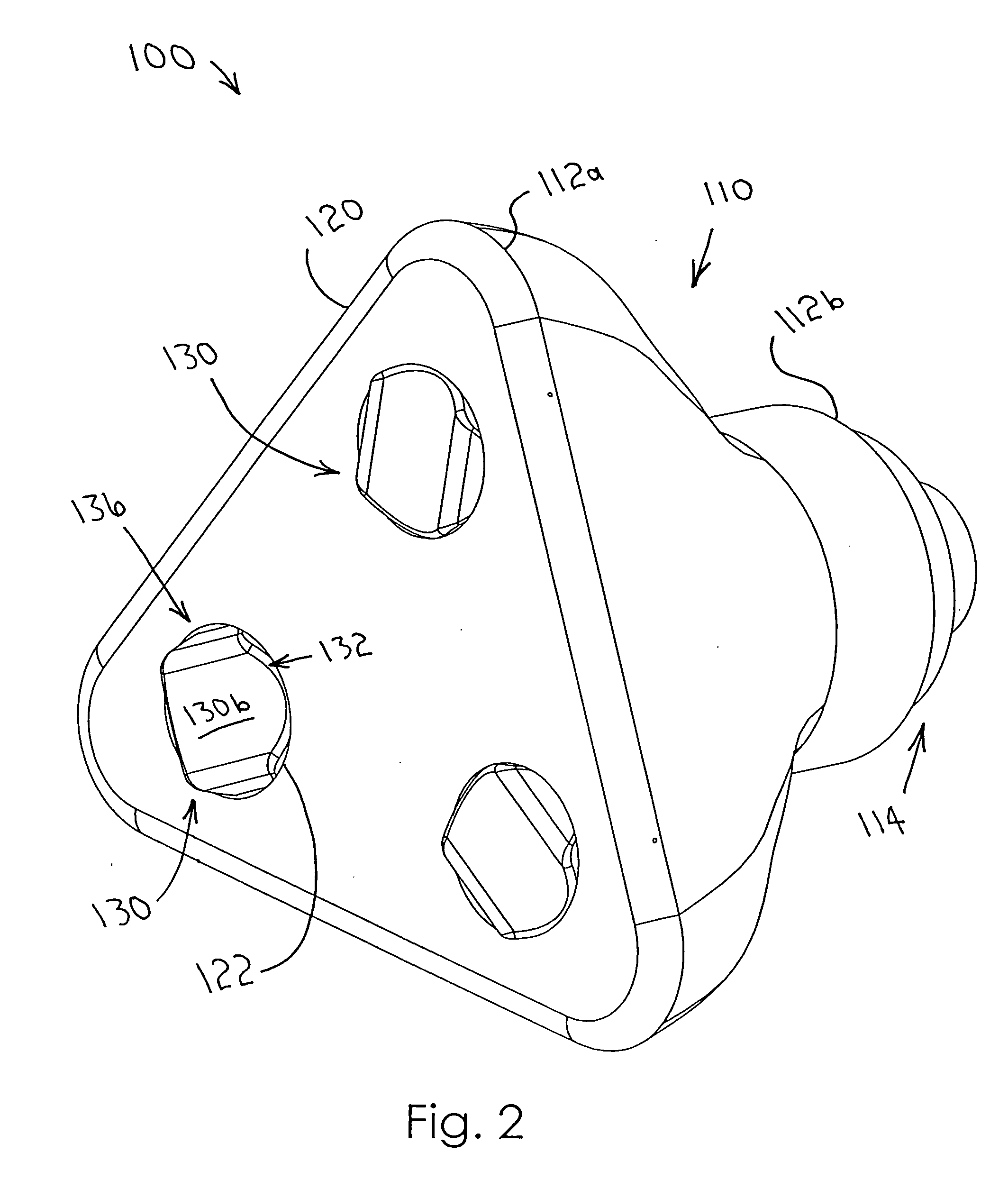Vacuum attachment for converting a standard vacuum into a centralized dust collection system
a vacuum and vacuum attachment technology, applied in the direction of vehicle maintenance, vehicle cleaning, cleaning equipment, etc., can solve the problems of not providing a device, collecting often becomes expensive and cumbersome, etc., and achieve the effect of convenient and economical manufacturing
- Summary
- Abstract
- Description
- Claims
- Application Information
AI Technical Summary
Benefits of technology
Problems solved by technology
Method used
Image
Examples
Embodiment Construction
[0023] A vacuum attachment for use with a standard vacuum cleaner having an inlet port according to the present invention will now be described in detail with reference to FIGS. 1 through 4c of the accompanying drawings. More particularly, a vacuum attachment 100 includes an aerodynamic bell housing 110, a distribution plate 120 defining a plurality of blast gate openings 122, a plurality of blast gates 130, and means 140 for biasing each blast gate 130 toward a closed configuration 136 (FIGS. 2 and 4b).
[0024] The aerodynamic bell housing 110 has first and second ends 112a, 112b. The first end 112a of the bell housing 110 defines an opening 115 (FIG. 5a). The second end 112b of the bell housing 110 defines a bell housing outlet 113 and includes a standard configuration 114 (also called standard coupling means 114) for releasably coupling the bell housing 110 to an inlet port 104 of a standard vacuum cleaner 102 (FIGS. 4b and 4c). The bell housing 110 is preferably constructed of in...
PUM
 Login to View More
Login to View More Abstract
Description
Claims
Application Information
 Login to View More
Login to View More - R&D
- Intellectual Property
- Life Sciences
- Materials
- Tech Scout
- Unparalleled Data Quality
- Higher Quality Content
- 60% Fewer Hallucinations
Browse by: Latest US Patents, China's latest patents, Technical Efficacy Thesaurus, Application Domain, Technology Topic, Popular Technical Reports.
© 2025 PatSnap. All rights reserved.Legal|Privacy policy|Modern Slavery Act Transparency Statement|Sitemap|About US| Contact US: help@patsnap.com



